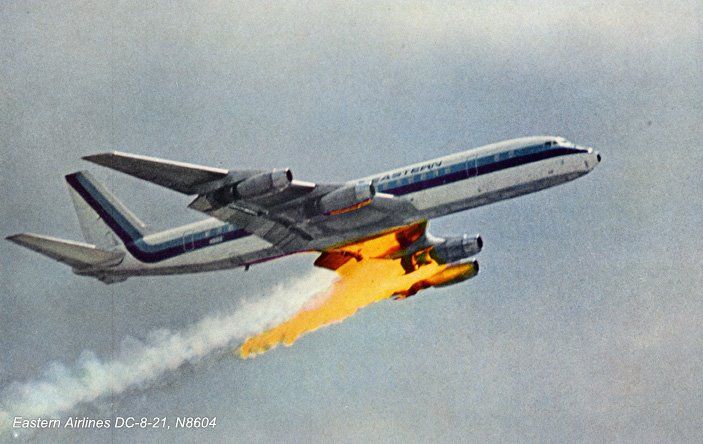Just came across this amazing photo showing Eastern DC-8 taking off from TJSJ with fire on its engine on Feb 14, 1964. The plane made successful emergency landing without any injuries and strange enough without any damage!!! Made me wonder how the plane could dump fuel without increasing the flame???
Is it proper procedure to skip fuel dumping and try to land the plane full loaded with fuel to avoid increasing flame or what??? What procedures did the pilots execute when the engine was in flames apart from shutting down engine?
Check this out

Regards,
Aharon

















